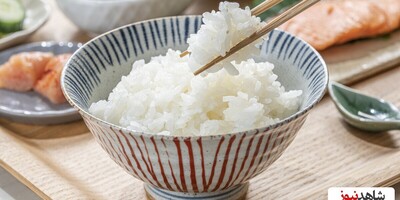How These Exercise Can Effectively Treat Knee Stiffness!
According to SHAHEDNEWS, As we age, we tend to sit more and move less, leading to the buildup of synovial fluid, which normally lubricates the knee. However, excessive accumulation and deposits can cause knee stiffness.
Knee Stiffness
The knee joint is one of the major joints that endures significant weight during various activities, making it prone to injuries and conditions. Knee issues appear in various forms; knee stiffness and immobility are conditions that need proper evaluation. Knee stiffness refers to the inability to move the knee joint within its normal range of motion and may feel heavy. This condition commonly occurs after an injury, overuse, or inflammation in the joint or surrounding tissues. Depending on underlying factors, knee stiffness can be short-term or persist over a longer period.
Dry Knee Syndrome
Dry knee syndrome, also known as arthrofibrosis, is a condition found in individuals whose knee joints have been injured, surgically operated on, or both. In response to injury or surgery, scar tissue forms in the affected area, causing surrounding tissues to tighten around the knee joint, leading to stiffness. Difficulty bending and straightening the knee completely are among the side effects of this condition. Proper exercise and rehabilitation can help relieve discomfort and pain.
Causes of Knee Stiffness
In most cases, knee stiffness is caused by knee trauma or an inflammatory process, such as arthritis symptoms. It may result from conditions that trigger inflammation in or around the knee joint, including:
- Abscess
- Ankylosing spondylitis (spine joint inflammation)
- Bursitis (inflammation of a sac-like structure acting as a joint cushion)
- Gout (a type of arthritis caused by uric acid buildup in joints) and pseudogout
- Osteoarthritis
- Psoriatic arthritis (arthritis related to skin psoriasis)
- Rheumatoid arthritis (chronic autoimmune disease involving joint inflammation)
- Systemic lupus erythematosus (where the body attacks its healthy cells and tissues without cause)
Exercise Therapy for Knee Stiffness
Exercise helps increase joint movement, reducing stiffness. It’s also an excellent way to lose or maintain a healthy weight, as excess weight can increase the risk of joint pain and stiffness.
Exercises for Treating Knee Stiffness
Quadriceps Stretch
Stand and hold onto a chair or wall for balance. Lift one leg, grab the ankle, and pull the heel toward your buttocks. Hold for 30 seconds, keeping your knees close together. Stop when you feel a stretch in the front of your thigh. Repeat with the other leg.
Straight Leg Raise
Knee stiffness often causes pain around or beneath the kneecap. The straight leg raise strengthens muscles that support the knee without straining the kneecap.
Perform the leg raise while lying flat, bending one knee slightly, and lifting the other straight leg as high as possible. Hold for 10 seconds, then lower. Repeat 10 times per leg to strengthen thigh muscles and engage them in supporting the knee.
Quadriceps Strengthening
Sit on the floor with legs extended straight in front. Tighten the upper thigh muscles and press your knee against the floor. Avoid pressing hard on your knees. Performing these exercises daily for knee pain increases your range of motion.
Short Arc Quads
Starting position: Lie or sit straight with one leg on a flat surface. Place a rolled towel under your knee.
Movement: Flex your foot, tighten your thigh muscles, and gently lift your leg off the surface until the knee is straight.
Hamstring Stretch (Lying Down)
This exercise stretches and strengthens the hamstrings, which connect to the knee. To perform:
Lie on the floor or a bed, bend both knees. Slowly lift one leg, still bent, and pull it toward your chest. Place your hands behind the thigh, not the knee, then straighten your leg. Pull until you feel a stretch and hold for 30–60 seconds. Slowly bend the knee and lower the leg.
Seated Knee Raises
Starting position: Sit on a chair with feet flat on the ground. Movement: Lift and lower each leg alternately. Move your knees and feet up and down.
Marching in Place
Marching is excellent for reducing knee stiffness. You can perform this move at home or work while sitting.
Sit on a chair with feet on the ground. Tap each foot gently on the ground, one at a time. If this feels easy, march while standing. Repeat several times daily to strengthen muscles without excessive knee pressure.
Water Kicking
Perform this exercise in a pool to benefit from water's buoyancy, which reduces joint pressure. Hold the pool's edge, allowing your legs to float in the water.
Gently kick with your legs to stretch your hamstrings and quadriceps. The kicks work your muscles and increase flexibility in your joints, with the added benefit of reduced gravitational pull.












